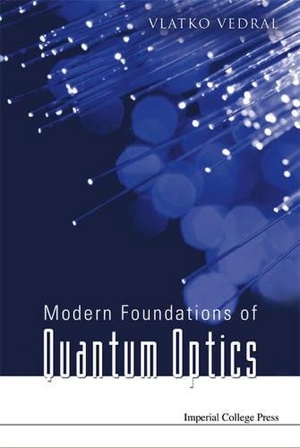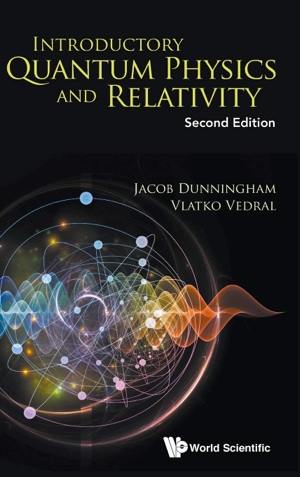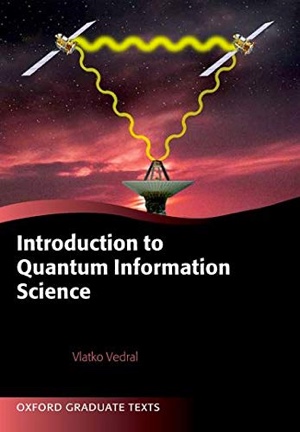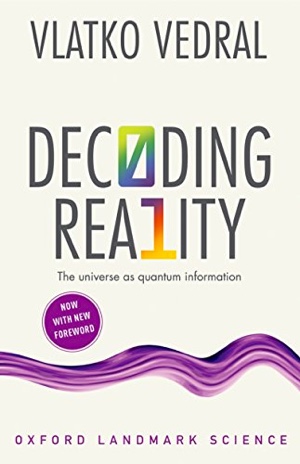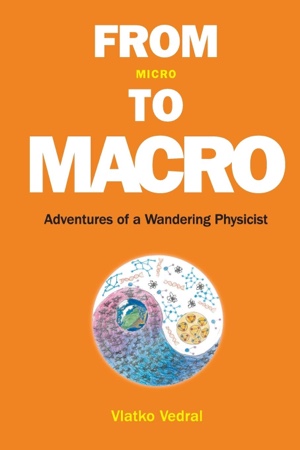The Weighty Matter of Fermions and Bosons
Something surprised me greatly recently. I realised that what we have all been taught about fermions and bosons might be completely false. The story – as far as all textbooks and most articles are concerned – goes something like this.
There are two kinds of particles in this world. There are the particles whose quantum state changes when you swap them, and those that don’t. The first kind are called fermions: they are the constituents of matter and the very reason why matter is matter (i.e. why it is stable, at least to some degree). The second kind are bosons and they are the mediators of the forces between material objects.
For instance, electrons are fermions and part of matter, while photons are bosons (particles of light) and are exchanged by electrons resulting in their electromagnetic interaction.
All this is fine and uncontroversial. But then we are usually told that quantum physics and relativity are responsible for the existence of fermions and bosons. This is the famous “spin-statistics theorem”, usually attributed to Pauli, although many other people have proved it and some much better than Pauli (at least as far as I can tell).
The bit that I realised was wrong is that we actually don’t need Einstein’s relativity to argue for the existence of fermions and bosons. Ordinary rotations in three dimension actually suffice (which are already an integral part of the Galilean mechanics and we do not need to worry about space and time margining into one another as is the case with Einstein’s special relativity).
I came to this realisation in a roundabout way, and all because of my collaborator’s (Chiara Marletto) insistence on something she calls “Einstein’s locality” (yes, Einstein does come into it after all – it’s difficult to get rid of that guy in physics). Namely, Chiara keeps telling me that it is not enough that things cannot travel faster than the speed of light (as in Einstein’s relativity), but we must be stricter than that! Namely, we must exclude all magic from happening. This means that if we have two different physical systems, say a table and a chair, then changing the state of one of them (say putting a cat on the chair) should not affect the other one (the table stays as it is). This is Einstein’s locality.
And it sounds blindingly obvious to the point of being trivial. However, one must remember that in the quantum world atoms and photons do not exist in the way that tables and chairs do. And this is where all hell breaks loose.
Electrons and photons can be created and destroyed (by the way, so can tables and chairs, but this is not something we really witness in the everyday world) and so the fundamental principle of “no magic” must apply to something more permanent in the quantum world. These more permanent entities are quantum fields. Every fundamental particle is an excitation of its own underlying quantum field. Electrons are quanta of the electron (sometimes called Dirac) field, photons of the electromagnetic field and so on. Now the Einstein principle of locality says this: changing one field in one place must not instantaneously affect this or another field in another place (it might do so later if the two locations somehow interact, but it must not happen instantaneously).
So what has this got to do with fermions and bosons? When two fermions are swapped, their quantum state acquires a phase shift (a minus sign). And, it looks as though this phase shift violates Einstein’s locality because we can move about one of the electrons, all the way around the other one completing the full circle, after which the phase appears. But the phase pertains to both electrons which seems to mean that the other electron (which we didn’t touch) also gets affected. Clearly some kind of an “action at a distance”.
It is as though by moving a chair around a table, the table ends up being flipped upside down. Clearly not a desirable property (especially during dinnertime).

Image (c) Mia Vedral
This “fermionic nonlocality” has worried Chiara a great deal and has even led our friend David Deutsch to say (with a tongue in cheek): “fermions are a scam”.
Note incidentally that bosons don’t have this problem as their quantum state does not change when we swap them. Note also that this is all about rotations and does not involve boosting things to high speeds or any other effects that are integral to Einstein’s relativity. This is what I found particularly interesting and what prompted me to look into it in more detail.
Now comes the punchline. In order to make fermions comply with Einstein’s locality we can use the good old ingenious method of Faraday’s (as perfected by Maxwell). We can postulate (and Chiara and I wrote a paper about it recently – you can read it here) the existence of another field that mediates the interaction between fermions when they are swapped.
Therefore, when you move one fermion about, it creates a kink in the underlying field and this kink propagates to the other electron which is how it gets affected. All nice and local. Now, Chiara and I went further than this. We conjectured that the field that does this is gravity. This is a natural candidate since gravity couples to everything in the universe. It affect bosons too, but because their spin is an integer the phase acquired happens to be +1 and cannot be observed! So it looks as though they are very different to the fermions (whose spin is half integral), but in fact, the interaction is the same as with fermions, it is just that the effect is twice that for fermions and (-1) times (-1) equals (+1).
The funny things is this. If Chiara’s and my speculation is correct, there are two further surprises in store. One is that gravity must then also be quantum! Because if gravity is to mediate the phase between fermions (and bosons, but with no observable effect), then gravity must be as quantum as the fermionic and bosonic fields (Chiara and I have elaborated on this general argument several years ago in a number of publications). Secondly, when we talk about the stability of matter in the sense of why atoms are stable and why tables and chairs (and animals) do not collapse to their lowest energy state, perhaps the answer is not “because matter is made up of fermions”. Instead, we might have gravity to account for it too.
This last conclusion would be really weird. We are usually told that neutron stars do not collapse into a black hole because the gravity that wants to crush it into it is resisted by the fact that neutrons are fermions and obey Pauli’s exclusion principle (Chandrasekhar got a Nobel Prize for figuring this out and calculating the radius of a neutron star). Pauli’s principle is exactly the consequence of the fermionic minus one phase. But if quantum gravity is responsible for fermionic statistics, then the story behind neutron stars would be this. The classical part of gravity wants to compress all the neutrons into a point, but the quantum part of gravity resists it. Clearly very much a Dr. Jekyll and Mr. Hide-like behaviour from the weakest (albeit most ubiquitous) force known to us at present.
Sign up to my substack if you'd like to have my articles delivered straight to your inbox
ASK ME ANYTHING!
If you'd like to ask me a question or discuss my research then please get in touch.
